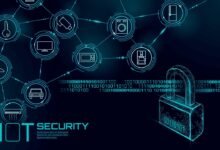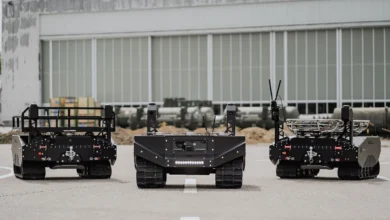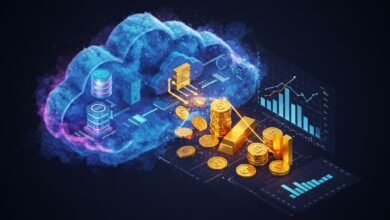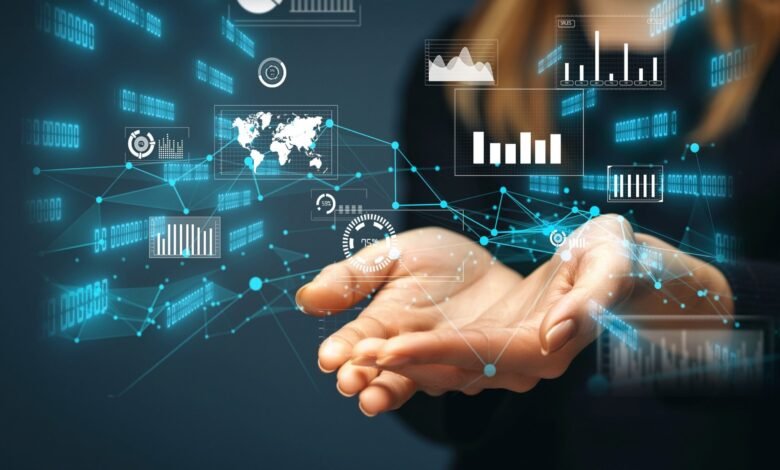
In today’s hyperconnected digital landscape, billions of devices continuously generate massive volumes of data every second. IoT data analytics has emerged as the critical bridge between raw sensor data and meaningful business insights that drive competitive advantage. Organizations across industries are discovering that the true value of the Internet of Things lies not merely in connectivity, but in the intelligent analysis of the information these connected devices produce. From manufacturing floors to smart cities, from healthcare facilities to retail stores, IoT analytics is revolutionizing how businesses operate, make decisions, and deliver value to customers.
The explosion of connected devices—projected to exceed 75 billion globally by 2025—presents both unprecedented opportunities and significant challenges. Each sensor, whether monitoring temperature, vibration, pressure, or movement, creates a continuous stream of information. Without sophisticated data analytics capabilities, this deluge of data remains meaningless noise. However, when properly collected, processed, and analyzed, this same data transforms into actionable intelligence that can predict equipment failures before they occur, optimize energy consumption in real-time, enhance customer experiences, and unlock entirely new revenue streams.
IoT data analytics encompasses the entire lifecycle of information management: from data collection through IoT sensors and devices, to data storage in cloud or edge computing environments, through advanced analysis using machine learning and artificial intelligence, and finally to visualization and action. Organizations implementing robust IoT analytics solutions report dramatic improvements in operational efficiency, significant cost reductions, enhanced customer satisfaction, and the ability to innovate faster than competitors.
Whether you’re managing a fleet of vehicles, operating industrial machinery, monitoring patient health, or optimizing supply chains, understanding how to transform sensor data into business insights has become essential for survival and growth in the digital economy. This comprehensive guide explores the fundamentals, technologies, applications, and best practices for leveraging IoT data analytics to drive measurable business outcomes.
What is IoT Data Analytics
IoT data analytics is the comprehensive process of collecting, processing, analyzing, and interpreting data generated by connected devices and IoT sensors to extract meaningful patterns, insights, and actionable intelligence. At its core, IoT analytics transforms the continuous stream of raw information from billions of devices into strategic business insights that inform decision-making, optimize operations, and create competitive advantages.
The fundamental concept revolves around the systematic approach to handling sensor data. Unlike traditional data analytics that typically deal with structured, batch-processed information, IoT data analytics must manage high-velocity, high-volume, and often unstructured data streams. This data originates from diverse sources—temperature sensors, pressure gauges, motion detectors, GPS trackers, RFID tags, smart meters, wearable devices, and countless other IoT devices. Each sensor generates data points at varying frequencies, from milliseconds to hours, creating complex data ecosystems that require specialized analytical frameworks.
The IoT analytics process typically follows several critical stages. First, data collection occurs through various communication protocols, including MQTT, CoAP, HTTP, and cellular networks. Next, data preprocessing cleans and normalizes the information, removing noise, handling missing values, and standardizing formats. Then, data storage solutions—whether cloud-based platforms, edge computing nodes, or hybrid architectures—organize the information for efficient retrieval and analysis. Subsequently, advanced analytics techniques, including descriptive analytics, diagnostic analytics, predictive analytics, and prescriptive analytics, extract insights from the data. Finally, data visualization tools present findings in accessible formats that stakeholders can understand and act upon.
What distinguishes IoT data analytics from conventional analytics is its emphasis on real-time processing, scalability to handle massive data volumes, and integration with machine learning algorithms that continuously improve analytical accuracy. Modern IoT analytics platforms leverage artificial intelligence to identify patterns invisible to human analysts, detect anomalies that signal potential problems, and generate predictions about future states or events. These capabilities enable organizations to shift from reactive problem-solving to proactive optimization and innovation.
Types of IoT Data Analytics
Understanding the different types of IoT analytics is essential for implementing effective data strategies. Each analytical approach serves distinct purposes and delivers unique value to organizations seeking to maximize their IoT investments.
Descriptive Analytics
Descriptive analytics answers the fundamental question: “What happened?” This foundational level of IoT data analytics focuses on summarizing historical sensor data to understand past events and trends. Descriptive analytics aggregates information from multiple IoT devices, creating dashboards and reports that provide visibility into operations. For instance, a manufacturing facility might use descriptive analytics to review yesterday’s production output, energy consumption patterns, or equipment utilization rates. This analysis helps organizations establish baselines, identify patterns, and document performance metrics over time.
Diagnostic Analytics
Diagnostic analytics digs deeper to answer: “Why did it happen?” This analytical approach investigates the root causes behind observed patterns and anomalies in IoT data. By correlating data from multiple sensors and examining temporal relationships, diagnostic analytics helps organizations understand causal factors. When a production line experiences unexpected downtime, diagnostic analytics might reveal that temperature spikes in a specific component preceded the failure, or that variations in raw material quality contributed to equipment stress. This understanding enables targeted improvements and prevents recurring issues.
Predictive Analytics
Predictive analytics represents one of the most valuable applications of IoT data analytics, answering: “What will happen?” By applying machine learning algorithms and statistical models to historical sensor data, predictive analytics forecasts future events, behaviors, and trends. This capability is particularly powerful for predictive maintenance, where algorithms analyze vibration patterns, temperature fluctuations, and performance metrics to predict when equipment will likely fail—often weeks or months before actual breakdown occurs. Organizations implementing predictive analytics report maintenance cost reductions of 25-30% and equipment downtime reductions of up to 50%.
Prescriptive Analytics
Prescriptive analytics takes intelligence to the highest level by answering: “What should we do?” This advanced form of IoT analytics not only predicts future outcomes but also recommends optimal actions to achieve desired results. Prescriptive analytics evaluates multiple scenarios, considers constraints and objectives, and suggests the best course of action. For example, in smart grid applications, prescriptive analytics might recommend exactly how to adjust energy distribution across the network to minimize costs while ensuring reliability, based on real-time data from thousands of sensors monitoring demand, generation capacity, and grid conditions.
Real-Time Analytics
Real-time analytics processes sensor data immediately as it’s generated, enabling instantaneous insights and actions. This analytical approach is critical for applications requiring immediate responses, such as autonomous vehicle navigation, industrial process control, or fraud detection in financial transactions. Real-time analytics leverages edge computing to perform calculations close to data sources, minimizing latency and enabling split-second decision-making. Organizations implementing real-time IoT analytics gain competitive advantages through faster response times and the ability to capitalize on fleeting opportunities.
Key Components of IoT Data Analytics Architecture
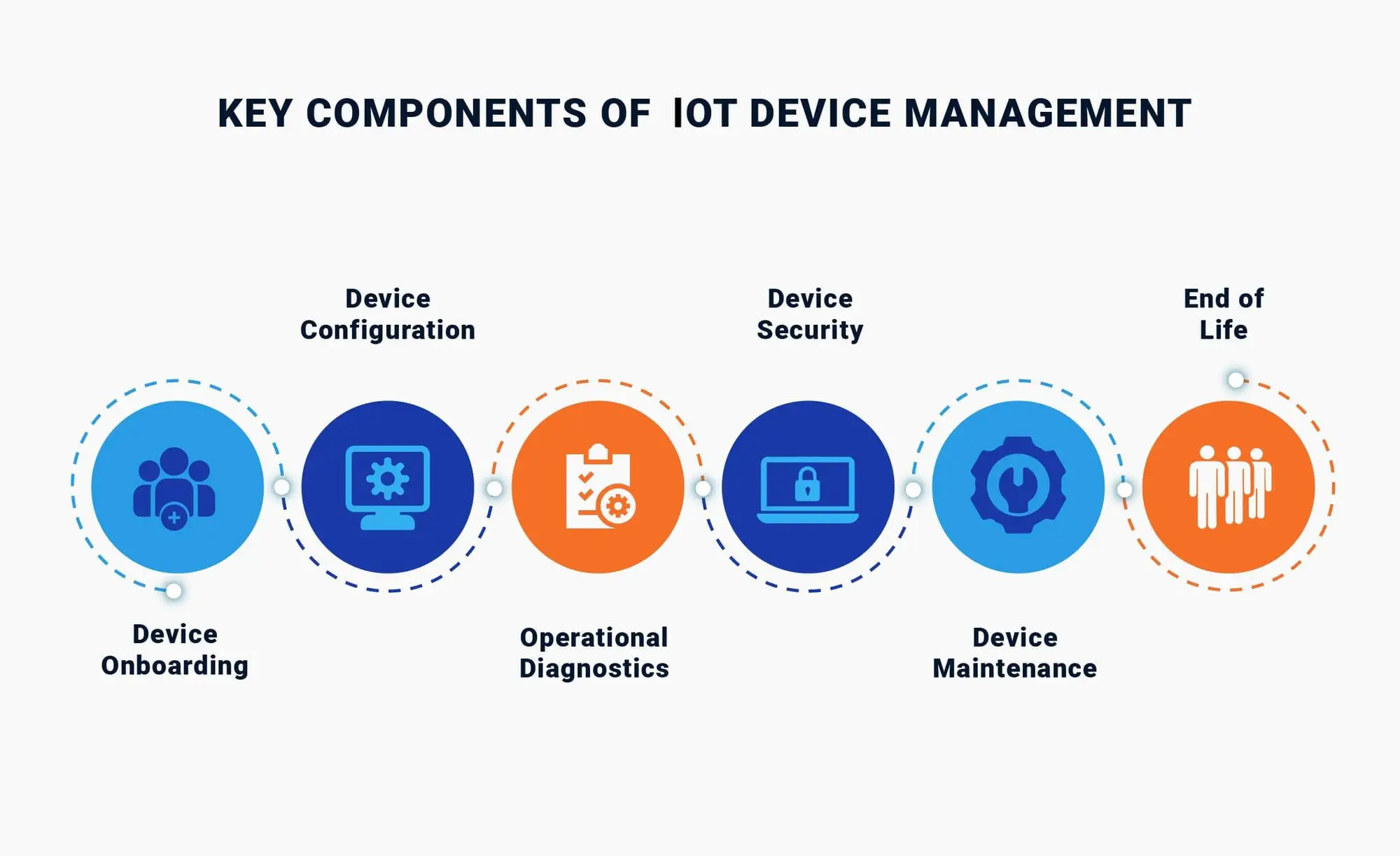
Effective IoT data analytics requires a robust architecture that seamlessly integrates multiple technological components. Understanding these building blocks is essential for designing scalable, efficient IoT analytics solutions.
IoT Sensors and Devices
IoT sensors form the foundation of any IoT analytics ecosystem. These devices collect raw data from physical environments—measuring temperature, humidity, pressure, motion, light, sound, chemical composition, location, and countless other parameters. Modern sensors have become increasingly sophisticated, incorporating microprocessors that enable edge analytics and reduce data transmission requirements. The selection of appropriate sensors depends on specific use cases, environmental conditions, accuracy requirements, and power constraints.
Connectivity and Communication Protocols
Connected devices must transmit data reliably and efficiently to analytics platforms. Various communication technologies serve different requirements: Wi-Fi for high-bandwidth, short-range applications; cellular networks (4G/5G) for mobile and wide-area coverage; LoRaWAN and NB-IoT for low-power, long-range deployments; and Bluetooth/Zigbee for personal area networks. Protocol selection impacts power consumption, bandwidth availability, latency, and implementation costs. IoT analytics architectures often incorporate multiple communication methods to optimize performance across diverse device populations.
Edge Computing
Edge computing brings computational capabilities closer to data sources, processing information locally on devices or nearby gateways rather than transmitting everything to centralized cloud servers. This architecture reduces latency, conserves bandwidth, enhances privacy, and enables real-time analytics even when connectivity is intermittent. Edge analytics performs initial data filtering, aggregation, and preliminary analysis, transmitting only relevant insights or summarized data to cloud platforms for deeper analysis. Organizations leveraging edge computing report improved responsiveness and reduced cloud computing costs.
Cloud Computing Platforms
Cloud platforms provide scalable infrastructure for storing massive volumes of IoT data and performing complex analytical operations. Major providers, including AWS IoT Analytics, Microsoft Azure IoT Hub, and Google Cloud IoT Core, offer comprehensive services specifically designed for IoT applications. These platforms provide data storage, machine learning tools, visualization capabilities, and integration with other enterprise systems. Cloud-based IoT analytics enables organizations to scale resources dynamically based on demand, access advanced analytical tools without major infrastructure investments, and leverage continuous platform improvements.
Data Storage Solutions
IoT data requires specialized storage approaches that balance accessibility, cost, and performance. Time-series databases like InfluxDB and TimescaleDB optimize storage and retrieval of chronologically ordered sensor data. Data lakes aggregate raw information in various formats, enabling exploratory analysis. Data warehouses organize processed data for business intelligence applications. Modern IoT analytics architectures often employ hybrid approaches, using hot storage for recent data requiring rapid access and cold storage for historical archives accessed less frequently.
Analytics and Machine Learning Tools
Advanced analytics tools and machine learning platforms transform raw IoT data into actionable insights. Statistical analysis software identifies correlations and trends. Machine learning algorithms detect anomalies, classify patterns, and generate predictions. Deep learning models process complex sensor inputs like images, audio, and video. Streaming analytics platforms like Apache Kafka and Apache Flink process data in motion, enabling real-time insights. Organizations select tools based on analytical requirements, technical expertise, integration capabilities, and cost considerations.
Visualization and Dashboard Tools
Data visualization makes complex IoT analytics accessible to stakeholders across organizations. Dashboard platforms display key performance indicators, trends, and alerts in intuitive formats, including graphs, heat maps, gauges, and geographic visualizations. Effective visualization tools enable users to drill down from high-level summaries to detailed device-level data, configure custom views for different roles, and set up automated alerts when metrics exceed thresholds. Well-designed dashboards transform sensor data into business insights that inform strategic and operational decisions.
Benefits of IoT Data Analytics for Businesses
Organizations implementing IoT data analytics realize substantial benefits across multiple dimensions of their operations. These advantages translate directly into competitive positioning and financial performance.
Predictive Maintenance and Reduced Downtime
Predictive maintenance represents one of the most compelling applications of IoT analytics. By continuously monitoring equipment health through sensors that track vibration, temperature, pressure, and performance metrics, organizations can predict failures before they occur. This proactive approach eliminates unexpected breakdowns, reduces emergency repair costs, and extends asset lifespans. Manufacturing companies report downtime reductions of 30-50% and maintenance cost savings of 20-40% after implementing predictive maintenance powered by IoT data analytics. Rather than following fixed maintenance schedules regardless of actual equipment condition, organizations service assets precisely when needed.
Operational Efficiency and Cost Reduction
IoT analytics identifies inefficiencies invisible without comprehensive data analysis. Real-time visibility into processes reveals bottlenecks, waste, and suboptimal resource utilization. Smart factories use sensor data to optimize production flows, reduce energy consumption, and minimize material waste. Logistics companies leverage IoT analytics to optimize routes, reduce fuel consumption, and improve delivery times. Facility managers use building automation data to reduce energy costs by 15-25% through optimized HVAC operations. The cumulative impact of these operational improvements generates significant cost savings and improved profitability.
Enhanced Customer Experience
IoT data analytics enables organizations to understand and anticipate customer needs with unprecedented precision. Retailers analyze foot traffic patterns, dwell times, and product interactions to optimize store layouts and inventory. Service providers monitor product usage patterns to offer proactive support and personalized recommendations. Connected products transmit performance data that helps manufacturers improve designs and deliver better user experiences. Organizations leveraging IoT analytics to enhance customer experiences report higher satisfaction scores, increased loyalty, and improved customer lifetime value.
Data-Driven Decision Making
Business insights derived from IoT analytics replace intuition and guesswork with evidence-based decision-making. Executives access real-time dashboards displaying operational metrics, enabling faster, more informed strategic choices. Product managers analyze usage data to prioritize features and improvements. Supply chain leaders use sensor data to optimize inventory levels and supplier relationships. Organizations cultivating data-driven cultures supported by IoT analytics consistently outperform competitors in innovation speed, market responsiveness, and strategic execution.
New Revenue Opportunities
IoT data analytics unlocks entirely new business models and revenue streams. Manufacturers transition from selling equipment to offering “as-a-service” models where customers pay based on usage or outcomes, with IoT sensors enabling accurate measurement and billing. Equipment producers monetize data insights by offering benchmarking services, optimization consulting, or predictive analytics to customers. Companies create entirely new products based on insights gleaned from sensor data. The global IoT analytics market, valued at billions of dollars and growing rapidly, demonstrates the substantial revenue potential of effective data monetization.
Risk Management and Compliance
IoT analytics enhances organizational risk management by providing early warning of potential issues. Environmental sensors detect hazardous conditions before they threaten safety. Security systems leverage IoT data to identify and respond to threats. Quality control sensors identify defects before products reach customers. Compliance monitoring systems automatically track and document regulatory adherence. Organizations implementing comprehensive IoT analytics for risk management report fewer incidents, reduced insurance costs, and stronger regulatory relationships.
Industry Applications of IoT Data Analytics
IoT data analytics delivers transformative value across virtually every industry sector. Understanding vertical-specific applications helps organizations identify relevant use cases and implementation strategies.
Manufacturing and Industrial IoT
Industrial IoT (IIoT) applies IoT analytics to manufacturing operations, creating smart factories that optimize production in real-time. Sensors on production equipment monitor performance, quality, and conditions continuously. Predictive maintenance prevents unexpected failures of critical assets. Quality control systems use computer vision and sensor data to detect defects immediately. Energy management systems optimize power consumption across facilities. Supply chain integration provides end-to-end visibility from raw materials to finished products. Leading manufacturers implementing comprehensive IIoT analytics report overall equipment effectiveness improvements of 15-25% and quality defect reductions of 30-40%.
Healthcare and Remote Patient Monitoring
Healthcare organizations leverage IoT analytics to improve patient outcomes while reducing costs. Wearable devices and connected medical equipment continuously monitor vital signs, enabling early detection of deteriorating conditions. Hospital asset tracking systems locate equipment precisely when needed, eliminating wasted time and reducing capital requirements.
Medication compliance monitoring ensures patients take prescribed treatments correctly. Remote patient monitoring programs keep high-risk patients safe at home, reducing expensive hospitalizations. IoT data analytics in healthcare also supports clinical research by aggregating anonymized patient data to identify treatment effectiveness patterns.
Transportation and Fleet Management
Transportation companies use IoT analytics to optimize fleet operations comprehensively. GPS sensors track vehicle locations, routes, and speeds in real-time. Engine diagnostics sensors enable predictive maintenance of vehicles, reducing breakdowns and repair costs. Driver behavior monitoring improves safety and fuel efficiency. Load sensors optimize cargo capacity utilization. Route optimization algorithms leverage real-time traffic data to minimize delivery times and fuel consumption. Fleet managers report fuel cost reductions of 10-20% and maintenance cost savings of 25-35% through IoT analytics implementation.
Energy and Utilities
Smart grid implementations transform energy distribution through IoT analytics. Smart meters provide granular consumption data, enabling dynamic pricing and demand response programs. Grid sensors detect outages and inefficiencies immediately, speeding restoration and reducing waste. Renewable energy installations use sensors and predictive analytics to optimize generation based on weather forecasts and demand patterns. Pipeline monitoring systems detect leaks and integrity issues before catastrophic failures occur. Utility companies implementing IoT analytics improve grid reliability, reduce operational costs, and facilitate integration of renewable energy sources.
Retail and Customer Analytics
Retailers deploy IoT sensors and analytics to understand customer behavior and optimize operations. Foot traffic analysis reveals store layout effectiveness and peak shopping times. Shelf sensors track inventory in real-time, triggering automatic replenishment. Smart fitting rooms enhance customer experiences while gathering preference data. Connected point-of-sale systems provide real-time sales analytics. Supply chain visibility ensures popular items remain in stock. Retailers implementing IoT analytics report inventory cost reductions of 20-30% and sales increases of 5-15% through better product availability and placement.
Agriculture and Smart Farming
Agricultural operations use IoT analytics to maximize yields while minimizing resource consumption. Soil moisture sensors enable precision irrigation, reducing water usage by 25-40%. Weather stations provide hyperlocal forecasts supporting planting and harvesting decisions. Livestock monitoring systems track animal health and location. Autonomous equipment uses sensor data for precise planting, fertilizing, and harvesting. Crop health monitoring through satellite imagery and ground sensors enables targeted interventions. Farmers implementing smart agriculture technologies report significant yield improvements and operational cost reductions.
Challenges in Implementing IoT Data Analytics
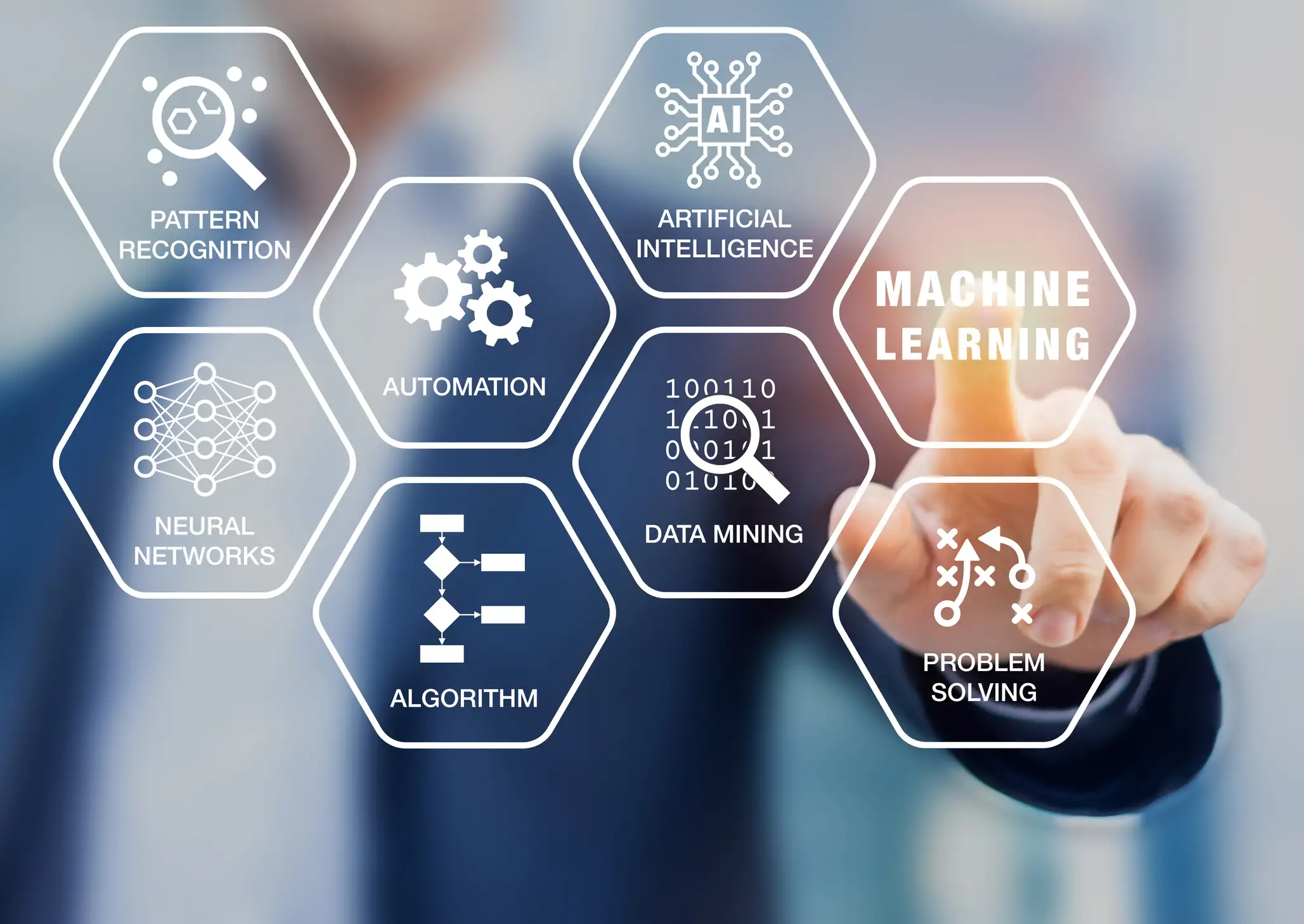
Despite substantial benefits, organizations face significant challenges when implementing IoT data analytics solutions. Understanding these obstacles enables better planning and more successful deployments.
Data Quality and Integration Issues
IoT sensors generate data with varying quality levels. Sensors may malfunction, producing erroneous readings. Environmental conditions create noise in sensor data. Different devices use incompatible data formats and protocols. Data integration from diverse sources creates technical complexity. Missing data points complicate analysis. Organizations must implement robust data cleaning, validation, and normalization processes to ensure analytical accuracy. Poor data quality undermines even the most sophisticated analytics algorithms, producing unreliable insights that erode trust in IoT initiatives.
Security and Privacy Concerns
Connected devices create numerous potential security vulnerabilities. Each IoT device represents a possible entry point for cyberattacks. Inadequately secured sensors can be compromised, feeding false data or becoming launching points for broader network attacks. Data transmission between devices and analytics platforms requires encryption to prevent interception. Privacy regulations like GDPR impose strict requirements on personal data handling. Organizations must implement defense-in-depth security strategies, including device authentication, encrypted communications, secure boot mechanisms, regular security updates, and comprehensive monitoring for suspicious activities.
Scalability Challenges
IoT deployments often grow rapidly from pilot projects with hundreds of devices to enterprise implementations with thousands or millions of sensors. Analytics architectures must scale seamlessly to handle exponentially increasing data volumes and processing requirements. Database performance degrades without proper indexing and optimization. Network infrastructure may become overwhelmed. Storage costs escalate unexpectedly. Organizations must design IoT analytics architectures with scalability as a primary consideration, leveraging cloud elasticity, efficient data management strategies, and modular designs that accommodate growth without requiring complete reimplementation.
Skill Gaps and Talent Shortage
Successful IoT data analytics implementation requires diverse expertise: embedded systems engineering, networking, data science, machine learning, cloud architecture, and domain-specific knowledge. The global shortage of qualified professionals in these areas creates significant implementation barriers. Organizations struggle to recruit, develop, and retain talent with the necessary capabilities. This challenge necessitates strategic approaches, including partnerships with specialized service providers, investment in employee development programs, utilization of user-friendly analytics platforms that reduce technical barriers, and cultivation of multidisciplinary teams that combine technical and business expertise.
Cost and ROI Uncertainty
IoT analytics projects require substantial investments in sensors, networking infrastructure, cloud platforms, analytics tools, and human resources. Organizations often struggle to accurately predict total implementation costs. ROI calculations remain uncertain, particularly for innovative applications without established benchmarks. Hidden costs emerge during implementation—integration complexity, data storage growth, ongoing maintenance, and unexpected technical challenges. Successful organizations address these concerns through phased implementation approaches, rigorous pilot projects that demonstrate value before scaling, clear success metrics established upfront, and continuous monitoring of both costs and benefits throughout deployment.
Best Practices for IoT Data Analytics Implementation
Organizations can maximize IoT analytics success by following proven implementation approaches and strategic principles.
Start with Clear Business Objectives
Successful IoT data analytics initiatives begin with clearly defined business problems and measurable objectives. Rather than implementing technology for its own sake, organizations should identify specific pain points, inefficiencies, or opportunities that IoT analytics can address. Define key performance indicators that will measure success. Ensure alignment between IoT initiatives and broader business strategy. Secure executive sponsorship and cross-functional support. Clear objectives focus implementation efforts, guide technology selection, and provide benchmarks for evaluating progress and demonstrating value.
Implement Robust Data Governance
Effective data governance ensures IoT analytics delivers reliable insights while managing risks appropriately. Establish clear policies governing data collection, storage, access, and usage. Define data ownership and stewardship responsibilities. Implement data quality monitoring and remediation processes. Establish retention policies balancing analytical value against storage costs and regulatory requirements. Create access controls ensuring sensitive data remains secure while enabling legitimate analytical needs. Document data lineage so users understand data origins and transformations. Strong governance builds trust in IoT analytics and ensures compliance with regulatory requirements.
Choose the Right Technology Stack
Selecting appropriate technologies profoundly impacts IoT analytics success. Evaluate IoT platforms based on scalability, integration capabilities, analytical tools, vendor support, and total cost of ownership. Consider whether edge computing, cloud computing, or hybrid architectures best suit specific requirements. Select communication protocols appropriate for device characteristics and deployment environments. Choose analytics tools matching organizational capabilities and requirements. Prioritize open standards and APIs that prevent vendor lock-in and facilitate future evolution. Resist one-size-fits-all approaches, instead tailoring technology selections to specific use cases and constraints.
Prioritize Security from the Beginning
Security must be integral to IoT analytics architecture rather than an afterthought. Implement device authentication mechanisms, ensuring only authorized sensors connect to networks. Encrypt data both in transit and at rest. Segment networks to limit potential attack impacts. Establish security monitoring to detect anomalous device behavior. Implement processes for regular security updates and patches. Conduct vulnerability assessments and penetration testing. Train personnel on security best practices. Organizations treating security as foundational rather than supplementary protect assets while building stakeholder confidence in IoT initiatives.
Adopt Agile and Iterative Approaches
IoT analytics implementations benefit from agile methodologies that deliver incremental value while enabling learning and adaptation. Begin with focused pilot projects addressing specific use cases. Demonstrate value quickly to build momentum and secure continued investment. Gather user feedback continuously and incorporate lessons into subsequent iterations. Scale gradually, adding capabilities and devices as organizational maturity increases. This approach reduces risk, enables faster value realization, and builds organizational capabilities progressively rather than attempting transformative changes simultaneously.
Foster Cross-Functional Collaboration
Successful IoT data analytics requires collaboration between IT, operations, data science, and business units. Create cross-functional teams with diverse expertise. Establish communication channels, ensuring technical and business perspectives inform decisions. Involve end users early and often, ensuring solutions address real needs and gain adoption. Break down organizational silos that impede data sharing and integrated analysis. Organizations fostering collaborative cultures around IoT initiatives develop more innovative solutions and achieve faster time-to-value.
The Future of IoT Data Analytics
IoT data analytics continues evolving rapidly, with emerging technologies and approaches promising even greater capabilities and value.
Artificial Intelligence and Machine Learning Integration
AI and machine learning increasingly enhance IoT analytics capabilities. Advanced algorithms automatically identify complex patterns in massive sensor data sets, detecting insights humans would never discover. Deep learning models process unstructured sensor inputs, including images, audio, and video. Reinforcement learning enables autonomous systems that continuously optimize performance based on outcomes. Natural language interfaces make IoT insights accessible to non-technical users. Automated machine learning (AutoML) reduces the expertise required to develop effective predictive models, democratizing advanced analytics across organizations.
Edge AI and Distributed Intelligence
The convergence of edge computing and artificial intelligence enables sophisticated analytics directly on devices and gateways. Edge AI reduces latency to milliseconds, critical for autonomous vehicles, industrial automation, and other time-sensitive applications. Processing data locally enhances privacy by keeping sensitive information on-device. Distributed intelligence enables operation during connectivity disruptions. Specialized edge AI chips provide powerful computational capabilities with minimal power consumption. Organizations implementing edge analytics gain responsiveness advantages while reducing cloud computing costs and bandwidth requirements.
5G and Enhanced Connectivity
5G networks transform IoT analytics capabilities through dramatically increased bandwidth, reduced latency, and support for massive device densities. 5G enables new applications like remote surgery, autonomous vehicle coordination, and immersive augmented reality, requiring instantaneous real-time analytics. Network slicing allows organizations to create dedicated virtual networks optimized for specific IoT applications. 5G facilitates mobile edge computing architectures that combine connectivity and computational capabilities. As 5G deployment accelerates, IoT analytics applications will expand into domains previously constrained by connectivity limitations.
Digital Twins and Simulation
Digital twins—virtual representations of physical assets—leverage IoT data to enable sophisticated simulation and optimization. Continuous sensor data keeps digital twins synchronized with real-world counterparts. Organizations test scenarios, predict outcomes, and optimize operations virtually before implementing changes physically. Digital twins accelerate product development by simulating performance under various conditions. Predictive models improve continuously as digital twins accumulate operational history. This technology enables unprecedented optimization of complex systems from individual machines to entire facilities and supply chains.
Blockchain for IoT Security and Data Integrity
Blockchain technology addresses security and trust challenges in IoT ecosystems. Distributed ledgers create immutable records of device identities, data provenance, and transactions. Smart contracts enable automated, trustworthy interactions between devices without centralized intermediaries. Blockchain ensures data integrity, making tampering evident immediately. Supply chain applications leverage blockchain to track products from origin to customer, with IoT sensors automatically recording each step. While blockchain adoption in IoT remains early-stage, pilot projects demonstrate potential for enhancing security, transparency, and automation.
More Read: Industrial IoT Transforming Manufacturing with Connected Systems
Conclusion
IoT data analytics has emerged as a transformative capability that converts the continuous streams of sensor data from billions of connected devices into actionable business insights, driving competitive advantage, operational excellence, and innovation across industries. From predictive maintenance that prevents costly equipment failures, to real-time analytics enabling split-second autonomous decisions, to prescriptive analytics recommending optimal actions, organizations implementing sophisticated IoT analytics realize substantial benefits, including reduced costs, enhanced customer experiences, new revenue opportunities, and superior decision-making.
Despite challenges involving data quality, security, scalability, and talent availability, organizations following best practices—starting with clear business objectives, implementing robust governance, selecting appropriate technologies, prioritizing security, adopting agile approaches, and fostering collaboration—successfully navigate implementation complexity and capture meaningful value.
As technologies, including artificial intelligence, edge computing, 5G connectivity, digital twins, and blockchain, continue evolving, the capabilities and applications of IoT data analytics will expand dramatically, making this capability increasingly essential for organizations seeking to thrive in our data-driven, connected future. The journey from sensor data to business insights represents not merely a technological evolution, but a fundamental transformation in how organizations understand their operations, engage their customers, and create value in the digital economy.

